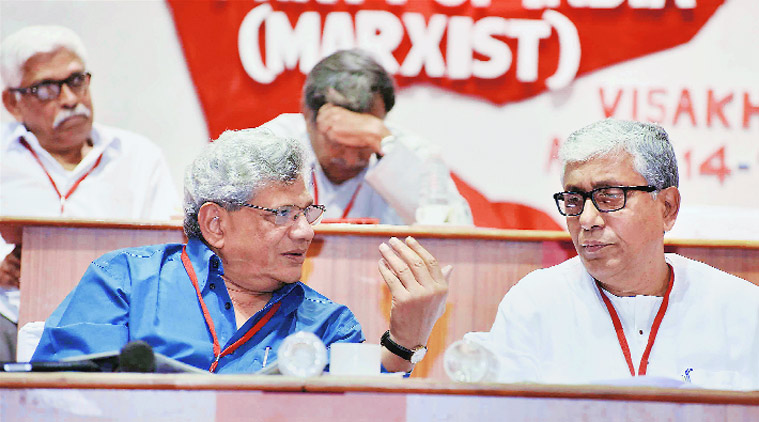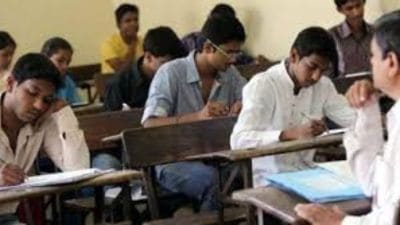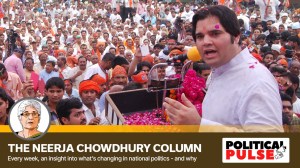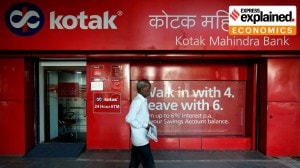- India
- International
The Vizag line
CPM won’t separate struggle against neoliberal policies from fight against Hindutva.
 CPM won’t separate struggle against neoliberal policies from fight against Hindutva.
CPM won’t separate struggle against neoliberal policies from fight against Hindutva.
If one agreed with what Oscar Wilde once famously said, “The only thing worse than being talked about is not being talked about”, the CPM should welcome the media attention it received in the build-up to the recent, successfully held national party conference at Visakhapatnam. It’s just that the supposed “power tussle” in the politburo over who the next general secretary should be, with reports using phrases such as “down to the wire”, “nail-biting finish” and “the suspense continues”, consumed much of the space in the media coverage of the conference. After the unanimous election of comrade Sitaram Yechury as general secretary, a development that has received all-round favourable comment, the next round of media speculation has started, over the “change of line” that can be expected and so on.
Such readings detract from an appreciation of the serious discussions, debates and decisions at what was indeed a historic conference. It also underplays one of the most democratic exercises undertaken by any political party in the country — an election of committees and the secretary of each committee at all levels of the party. More than one million party members were involved in this process, from the election of the unit functioning in a village or urban basti to the central committee and politburo, and then finally the general secretary. In addition, this time the entire organisation implemented, without exception, the constitutional change that each secretary, from the local committee to the central committee, can have a maximum tenure of three terms, roughly nine years. Those who complete three terms have to automatically step down. Hundreds of new secretaries have thus been elected, including at the top. This smooth transition at all levels of the CPM is something other parties can learn from and of which our cadre can be justifiably proud.
There can be little doubt, given the policy direction in the one year of the rule of the Narendra Modi government, that India is witnessing a rightward shift in social and economic policy. Although the general thrust of the economic policies of the Modi government is not very different from that of the Congress-led UPA’s, the capacity to push through blatantly pro-corporate policies is greatly enhanced by the numbers the ruling party has in Parliament. In addition, since the RSS now has direct access to the levers of power, with the elevation of its pracharak to the highest elected office in the country, there is a very real danger to the Constitution and structure of India, through the institutionalisation of the ideology and practice of Hindutva in the different wings of the state.
The party congress’s political resolution decided to reach out to people through sustained campaigns and struggle, not only to resist and fight back against this onslaught but to propose an alternative policy framework for India’s advance. The critical and most significant formulation in the document is that the struggle against the twin assaults, of neoliberal economic policies and Hindutva forces, cannot be separated as one cannot be identified as more toxic than the other. Hindutva, by misusing religion as a tool of political mobilisation on highly communal and sectarian lines, seeks to divide the people, which in turn weakens the united striking power of the very sections who suffer the most from the blatantly pro-corporate policies of the Modi government. The economic policies are the most direct assault on the lives and livelihood of the people and ignoring this, in the name of fighting Hindutva, would further disarm the people and help the communalisation of the polity.
It follows that the fundamental strategy of the party in the coming days would be to step up its intervention in both aspects. This would require the strengthening of the independent base of the party through mass work and ideological clarity. Second, an emphasis on building unity among the Left parties as natural allies in this endeavour. In addition, the resolution includes the need for much wider efforts to reach out to individuals, groups and movements which share the same concerns about the twin assaults on the Indian people today. Social alliances with different sections of the working people, the working class, farmers, Adivasis, youth, women, minorities and Dalits are an important aspect of the future work outlined. This emphasis on the gathering of the Left and democratic forces is the basis of the new political line, which asserts the independent identity of Left politics.

This was arrived at through a detailed review of the past. Without understanding the strengths and weaknesses of the past, we cannot hope to build for the future. This is not the space to go into the review, which, for those interested, is available on the party website. Suffice it to say that it is a document that is insightful, self-critical and sharp, which is why it was widely welcomed by the delegates. An important section deals with the CPM’s relations with other parties, particularly regional ones. The document notes that in recent years these parties have not been willing to come to any joint platform against the economic policies. Representing the rural rich nexus, their outlook on poor peasants and agricultural workers is also different. Despite this, efforts to rally them on a common set of alternative policies at the national level were unrealistic and erroneous. However, the review noted, if in the future they are prepared to come together on issues concerning the people, we should have no hesitation in being part of such joint action. It also noted that the projection of a Left and democratic front was hindered by the pursuit of alliances with these parties at the national or state level. As for the Congress, the document is categorical that there is no difference between it and the BJP where economic policies are concerned. Therefore, any alliance or front with the Congress in the name of fighting Hindutva is ruled out.
Well-wishers of the Left and the CPM have expressed concern at the depletion of the strength and mass base of our party. The conference has tried to seriously address these concerns. The more than one lakh people who thronged the public meeting on the beautiful beach in Visakhapatnam reflected the energy and commitment of millions of party supporters across the country. The decisions taken at the national party conference and the new leadership elected will strive collectively to overcome the setbacks and take forward our vision and goal of social and economic equality.
The writer is CPM politburo member and Rajya Sabha MP
editpage@expressindia.com
EXPRESS OPINION
Apr 24: Latest News
- 01
- 02
- 03
- 04
- 05










































